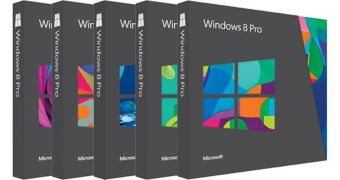Windows 8, which continues to be the core modern operating system that's serving as the foundation of Windows 8.1 and Windows 8.1 Update, is gradually left behind not only by Microsoft, but also by some developers and software companies that are focusing on the newer OS versions.
The original Windows 8 first came to be in October 2012 and since then, Microsoft worked to improve some specific features in order to make it a bit more appropriate for PCs and restore full desktop functionality available in all pre-Windows 8 OS releases.
Approximately one year later, the software giant launched Windows 8.1 to bring back the Start button and tweak the operating system in such a way that it would finally make the desktop more useful for those still running the software on a PC.
Fast forward to April 2014 and you get the new Windows 8.1 Update, which comprises a pack of improvements specifically designed for PCs and mouse users.
Windows 8, however, is left behind and all the improvements released to users who installed the modern operating system require at least Windows 8.1. What's more, Windows 8.1 Update is mandatory for 8.1 users, so unless they install it, their computers would no longer receive updates and security patches.
Of course, Windows 8 doesn't get any of these enhancements and the only way to benefit from the tweaks Microsoft is doing to its modern platform is to switch to Windows 8.1.
At the same time, some software developers are also pushing users to newer OS versions by releasing applications which no longer work on Windows 8.
AMD is the first company that does this, as its new Catalyst 14.6 beta doesn't offer Windows 8 support and requires at least Windows 8.1 to work.
When it announced that Windows 8.1 Update is mandatory for 8.1 users, Microsoft said that Windows 8 users could continue running their operating systems just like before, without any other installation required. And still, do would not be too surprised if the company soon decides to force everyone to install Windows 8.1, even though that would be really hard given that it's being delivered via the Windows Store.
On the Windows lifecycle fact sheet, Microsoft says that retail software end of sales for Windows 8 will take place on October 31, 2014, so the operating system will no longer be available as a separate package beyond this date.
There are no details regarding the mainstream support for Windows 8 per se, but only for Windows 8.1. Computers currently running Windows 8.1 will be receiving updates until January 9, 2018, while extended support will come to an end on January 10, 2023.

 14 DAY TRIAL //
14 DAY TRIAL //